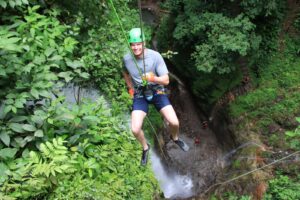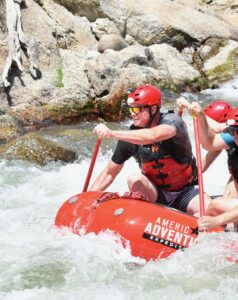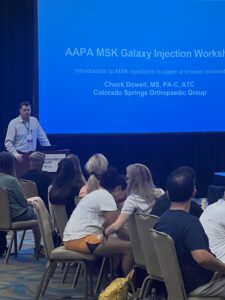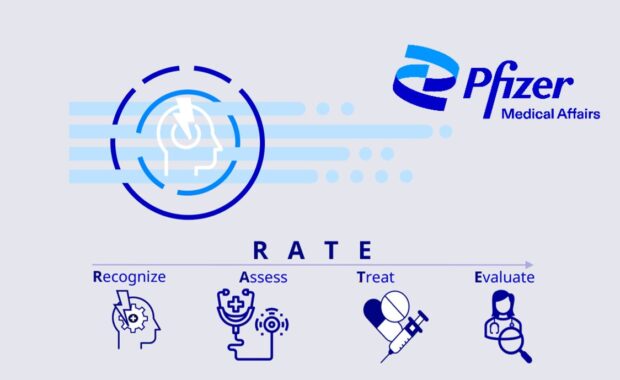A Day in the Life of a PA in Orthopaedic Express Care
The AAPA/AAOS Musculoskeletal Galaxy Conference will help build knowledge in this specialty for any PA who sees orthopaedic injuries
February 29, 2024
By Jennifer Walker
 In his 20-year PA career, Chuck Dowell, MS, PA-C, ATC, has gained experience in all orthopaedic specialties, including foot and ankle, hand and elbow, knees, shoulders, the spine, and total joints. After graduating from his PA program in 2004, Dowell first worked in orthopaedic surgery through a one-year residency at a hospital in Chicago. He spent nine years in general orthopaedics with a focus on sports medicine and total joints, mainly hip and knee replacements. He’s also worked in sports medicine with Brian Cole, the team physician for the Chicago Bulls and the White Sox, providing care, particularly cartilage transplantation surgeries, for athletes.
In his 20-year PA career, Chuck Dowell, MS, PA-C, ATC, has gained experience in all orthopaedic specialties, including foot and ankle, hand and elbow, knees, shoulders, the spine, and total joints. After graduating from his PA program in 2004, Dowell first worked in orthopaedic surgery through a one-year residency at a hospital in Chicago. He spent nine years in general orthopaedics with a focus on sports medicine and total joints, mainly hip and knee replacements. He’s also worked in sports medicine with Brian Cole, the team physician for the Chicago Bulls and the White Sox, providing care, particularly cartilage transplantation surgeries, for athletes.
[Register today for the AAPA/AAOS Musculoskeletal Galaxy Conference!]
In each of these roles, Dowell said, “I always take a patient-first approach. I really care about the patients and spending time with them and getting to understand what their problems are. I try to educate them on my thought process and what I think the next steps should be so we can make a shared decision on the appropriate treatment for them.”
Dowell has also traveled the world as a member of the sports medicine volunteer program with the United States Olympic & Paralympic Committee. From 2005 to 2017, he was part of a medical team that provided injury evaluation and rehabilitation, first aid management, and more to Team USA athletes on the paralympic soccer, roller hockey, U16 soccer, and wrestling teams—assignments that took him to Abu Dhabi, Belarus, Italy, Kiev, Sweden, Switzerland, and Ukraine.
 Today, Dowell—who also practiced orthopaedics in Scotland for three years, where he acted as an ambassador for the PA profession, which was new to the country at the time—is the lead provider for Express Care, an orthopaedic urgent care that is part of Colorado Springs Orthopaedic Group.
Today, Dowell—who also practiced orthopaedics in Scotland for three years, where he acted as an ambassador for the PA profession, which was new to the country at the time—is the lead provider for Express Care, an orthopaedic urgent care that is part of Colorado Springs Orthopaedic Group.
“At the clinic, patients anywhere from three years old to as old as you can get walk through the door with injuries, either acute or chronic, to any musculoskeletal part of the body,” said Dowell, who has also practiced in emergency medicine and urgent care. “Because I’ve been lucky enough to work with all these specialties in orthopaedics, I am able to evaluate and treat patients with any musculoskeletal complaint.”
Here’s what a typical Monday looks like for Dowell as an orthopaedic PA:
8:30/8:45 a.m.
Dowell arrives at the clinic, checks messages and lab results, and answers any questions the other three PAs in the clinic might have. He also goes through dictations, adding notes to patient charts from the previous day.

9:00 a.m. to 11:00 a.m.
At 9:00 a.m., the five-room Express Care clinic opens. On Mondays, Dowell said, “We have a line out the door because all the weekend athletes are here.” Typically, Dowell is the only provider, although he works with a medical assistant, who is able to apply casts and provide braces for patients.
During this two-hour block, Dowell sees 15 to 20 patients, most of whom have acute injuries from biking, hiking, skiing, sledding, and shoveling snow. Many of these patients are referred from family practice or urgent care clinics, and typically show up with ACL tears; broken ankles, wrists, or fingers; sprains; or shoulder, joint, and back pain.
On this day, Dowell’s patients include a young girl who broke her wrist while sledding and a 40-year-old man who strained his back while lifting a heavy object. Dowell gives a hinged knee brace and crutches to a 52-year-old patient who tore his ACL while skiing, schedules him for an MRI, and offers a referral to a sports medicine physician to go over the imaging results. For a 29-year-old woman with two broken wrists, Dowell talks to an orthopaedic surgeon and gets the patient scheduled for surgery within 48 hours.
Treatments for most patients typically involve some type of immobilization: a splint and potentially crutches for fractures, a sling for shoulder injuries, a walking boot for foot injuries. Imaging is ordered as necessary. Kids who have buckle fractures will often be put in a cast.

Dowell finds that patients really like the orthopaedic urgent care model. “Nobody wants to sit in an emergency room with a sprained ankle for four hours,” he said. “I can get them in and out of my office in 45 minutes most of the time and get them treated and X-rayed. The clinic also allows the practice to expand access to patients [and offer] treatment and evaluation in a more timely fashion.”
11:00 a.m. to 1:00 p.m.
Midday, Dowell finds he sees more patients with chronic injuries, including back, hip, knee, and shoulder pain, as well as arthritis. Many of these patients get regular cortisone injections with the practice’s orthopaedic physicians, but sometimes they can’t get appointments. “They’ll come to see me, and I can do the cortisone injections or help set them up for imaging and manage their pain with medication, if necessary,” Dowell said. He does the same for post-surgical patients who are experiencing an issue, such as increased pain or wound complications. Because the pace is slower during this time, Dowell also catches up on dictations from the morning and reviews ultrasounds, MRIs, and labs.
1:00 p.m. to 5:00 p.m.
The clinic gets busier again as patients try to get care before the end of the day. During this after-school time, Dowell performs a sports physical for a teenager. He also sees more patients who have acute and chronic injuries. The clinic’s office hours end at 5:00 p.m., but he often stays for another half hour to finish seeing patients. Dowell, the father of two young kids, finds the clinic hours and predictable schedule offer a good work-life balance.
For PAs who are interested in working in orthopaedics, Dowell recommends getting a range of experience. “Sometimes PAs getting into orthopaedics specialize too quickly. They just do total joints or hand and elbow, and then they’re not comfortable treating and evaluating injuries from other body parts,” he said. “If you have the opportunity to work in general orthopaedics, I think that can be quite helpful for a year or two to expand your knowledge and improve your practice quality.”

AAPA/AAOS Musculoskeletal Galaxy Conference
For PAs and NPs who are new to orthopaedics or who treat these injuries within other specialties, Dowell recommends the AAPA/AAOS Musculoskeletal Galaxy Conference, which will be held from June 5 to 9 in Portland, Oregon, this year. The conference will cover the most common conditions and injuries associated with each body part, while also offering hands-on workshops on topics like splinting and casting, as well as small group breakout sessions to discuss radiology cases and build skills in treating fracture fixations. Dowell, who is co-director of the 2024 conference, will lead lectures on fractures, injections, and physical exams.
“The conference is great for any PA who sees musculoskeletal orthopaedic injuries,” he said. “This includes family practice and urgent care PAs who see patients with fractures, sprains, and strains, and want to know how to diagnose and evaluate them, what imaging to order, how to treat them, and when to refer them. It’s a fantastic conference for getting an introduction to orthopaedics and improving that knowledge base.”
Jennifer Walker is a freelance writer in Baltimore, MD. Contact Jennifer at [email protected].
You Might Also Like
PA in Orthopaedic Surgery Shares What It’s Really Like in a Week
PA in Orthopaedics Saves Patient’s Life with Generalist Education
A Day in the Life of a PA in Orthopaedics
Thank you for reading AAPA’s News Central
You have 2 articles left this month. Create a free account to read more stories, or become a member for more access to exclusive benefits! Already have an account? Log in.



